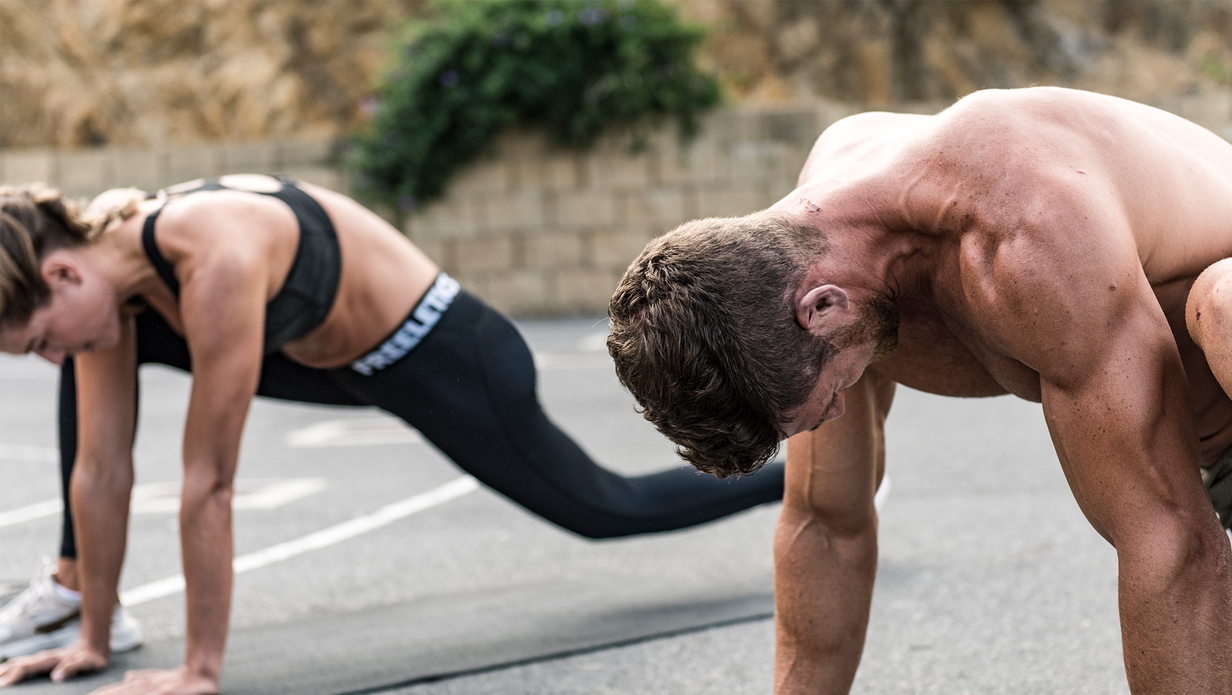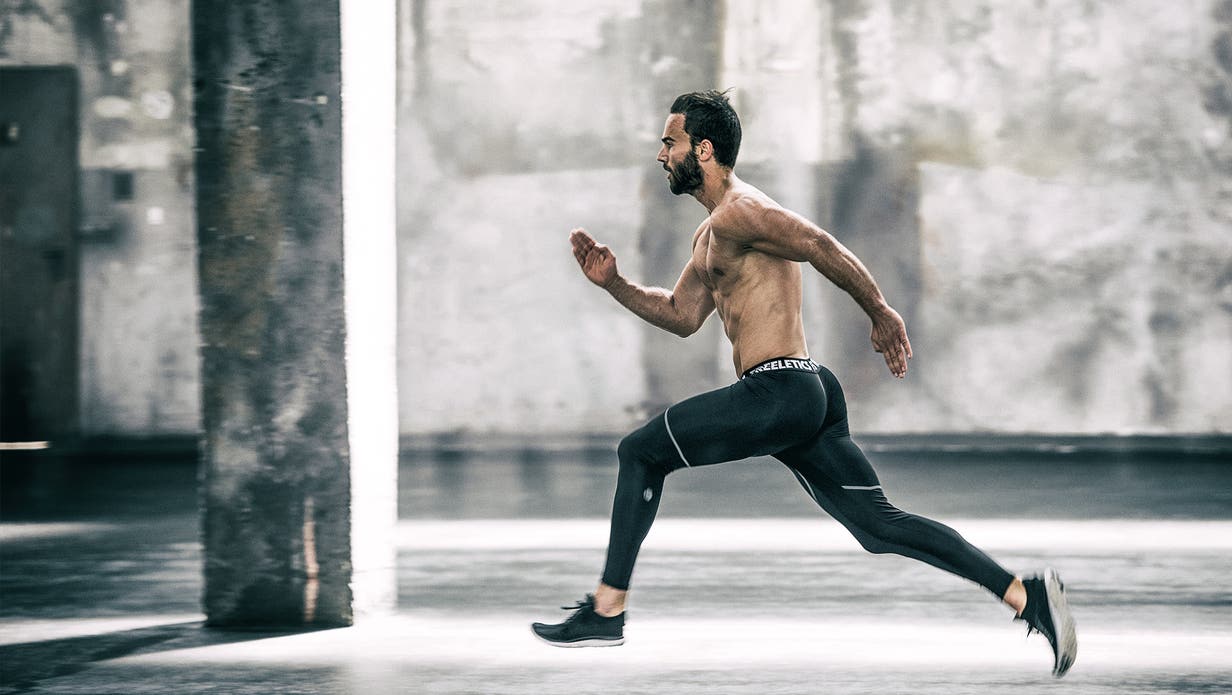HIIT: High-intensity interval training – a technique that’s earned its name as the hottest training method on the market. It’s fast, intense, and said to burn calories like nothing else, but what is it that actually makes this method of training so effective? If you’re still unsure of what really goes into a HIIT workout and which calorie-burning processes are triggered within the body as a result, you’re about to find out. Let’s finally answer the question many have been dying to ask: What the heck is HIIT?

What’s behind HIIT?
HIIT is a training approach that involves repeated bouts of high-intensity working periods followed by varied recovery times, mainly boosting the metabolism as well as maximizing the oxygen intake. These rest periods are crucial as they allow you to go harder during each working set, letting you reach intensities in later rounds that wouldn’t be possible if no rest were taken.
In total, you’ll spend more time working at a higher intensity. To get a better understanding of what we mean here, it’s important you grasp these two key points:
- High intensity working periods: High intensity means your heart rate is anywhere between 70% to 100% of your individual maximum heart rate during training. The length of each round can be anywhere from 20 seconds up to a couple of minutes.
- Recovery times: The goal of the rest is to allow your heart rate to slow down and let your body (and mind) get ready to give your all for the next working period. The rate at which your heart rate will lower depends on your capacity for recovery as well as the length of the rest period.
Why is this so important and what does it have to do with boosting your metabolism and maximizing oxygen intake? Let’s find out:
What are the benefits of high-intensity interval training?
During the high-intensity working periods, the body experiences an oxygen deficit and needs to restore itself to pre-exercise level. It is this excess postexercise oxygen consumption – EPOC for short – that boosts the metabolism and results in 6-15% more calories being burned in comparison to an aerobic workout (we’ll give you an example of this later). Another interesting point to consider is that during a HIIT workout, the body is able to burn calories yet still maintain the building of muscle mass – meaning you get the best of both worlds. And that’s not even all: This boost in your metabolism has several more positive effects on your health that go beyond burning calories, such as:
- lowering blood pressure
- increasing cardiovascular health
- stimulating insulin sensitivity which helps the exercising muscles to more readily use glucose for fuel to make energy
- improving cholesterol profiles
But the fun facts don’t stop there: It’s also been proven that a twenty-seven-minute session of HIIT, three times a week – so in total 81 minutes – produces the same anaerobic and aerobic benefits as 60 minutes of aerobic cardio training five times a week – which is a total of 300 minutes.
Consistently training is the main factor in achieving your fitness goals. HIIT workouts are a great solution if you struggle to make time to regularly train throughout the week.

What does a HIIT workout look like?
If you’ve already trained with the Freeletics app before, chances are you’ve already done one or more HIIT workouts. For example, ATHENA is one of the God workouts which consists of a variety of exercises followed by short breaks, or MAAT is a running workout where you must complete 10x 200m intervals with a 30-second break between each one.
There is however no “standard” HIIT workout. Since it’s all about heart rate and intensity, a high-intensity interval training workout can include any kind of sport or exercise, be it running, cycling, swimming, weights, or bodyweight training. But the two most popular methods are Tabata and Little. Here’s what they look like:
- Tabata Method: Tabata is the most popular form of HIIT training. It takes only 4 minutes to complete and is therefore the quickest of the three examples. How it works is simple: 20 seconds high intensity, followed by a 10 second recovery period, repeated 8 times. 20 seconds might not sound like long, but if you are going all out, that’s going to feel like the longest 20 seconds of your life! Trust us…Tabata hurts.
- Little Method: This method follows the structure of doing 60 seconds of high intensity followed by 75 seconds of low-intensity recovery periods for 12 cycles. In total it’s 27 minutes of work.
HIIT training works. But only if you’re prepared to struggle, sweat, and give it your all. If you’re not going all out, you’re not doing it right. Looking for maximum results along with a post-workout high like no other? Then go ahead, HIIT yourself – it’s worth it.
